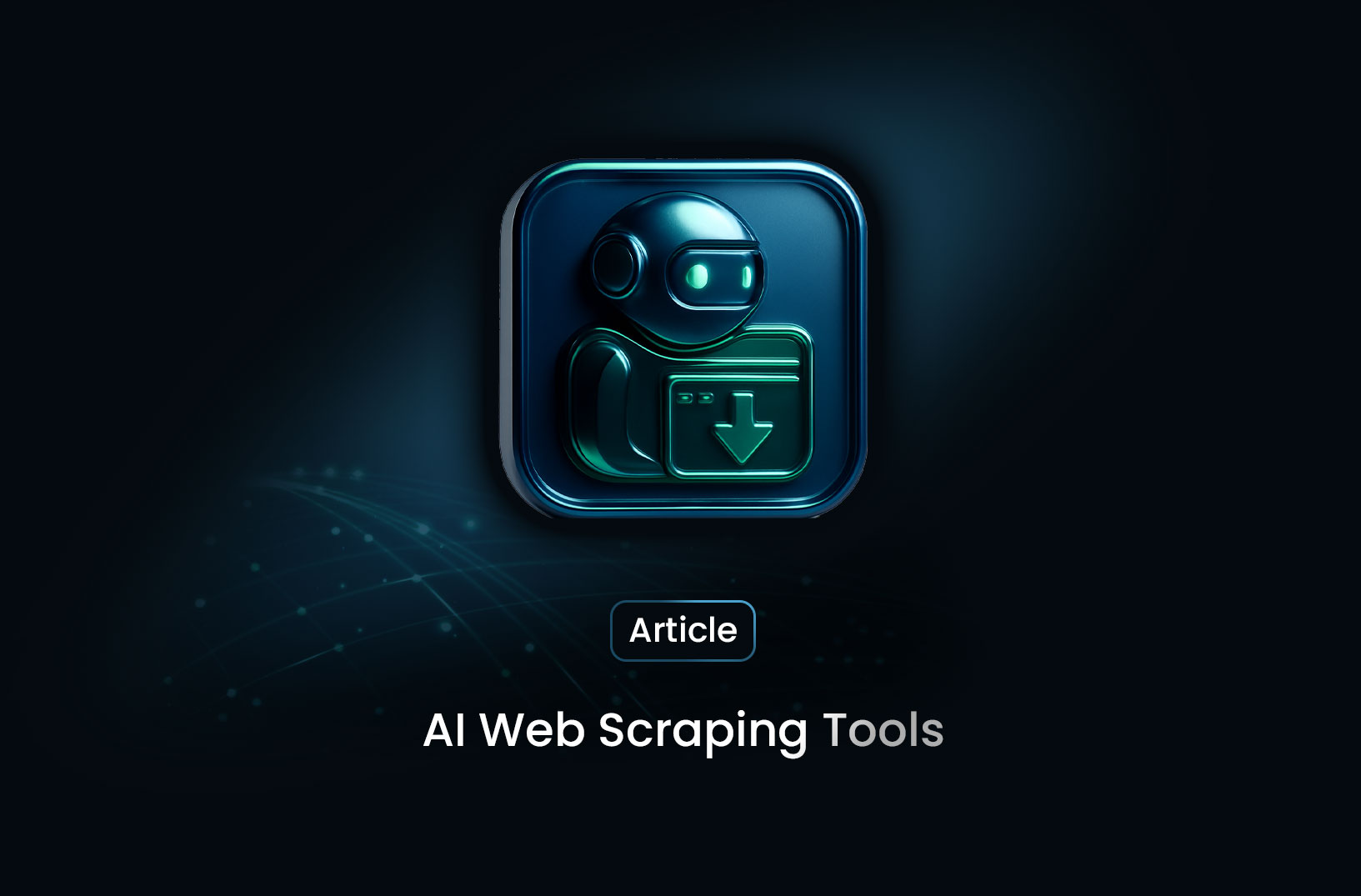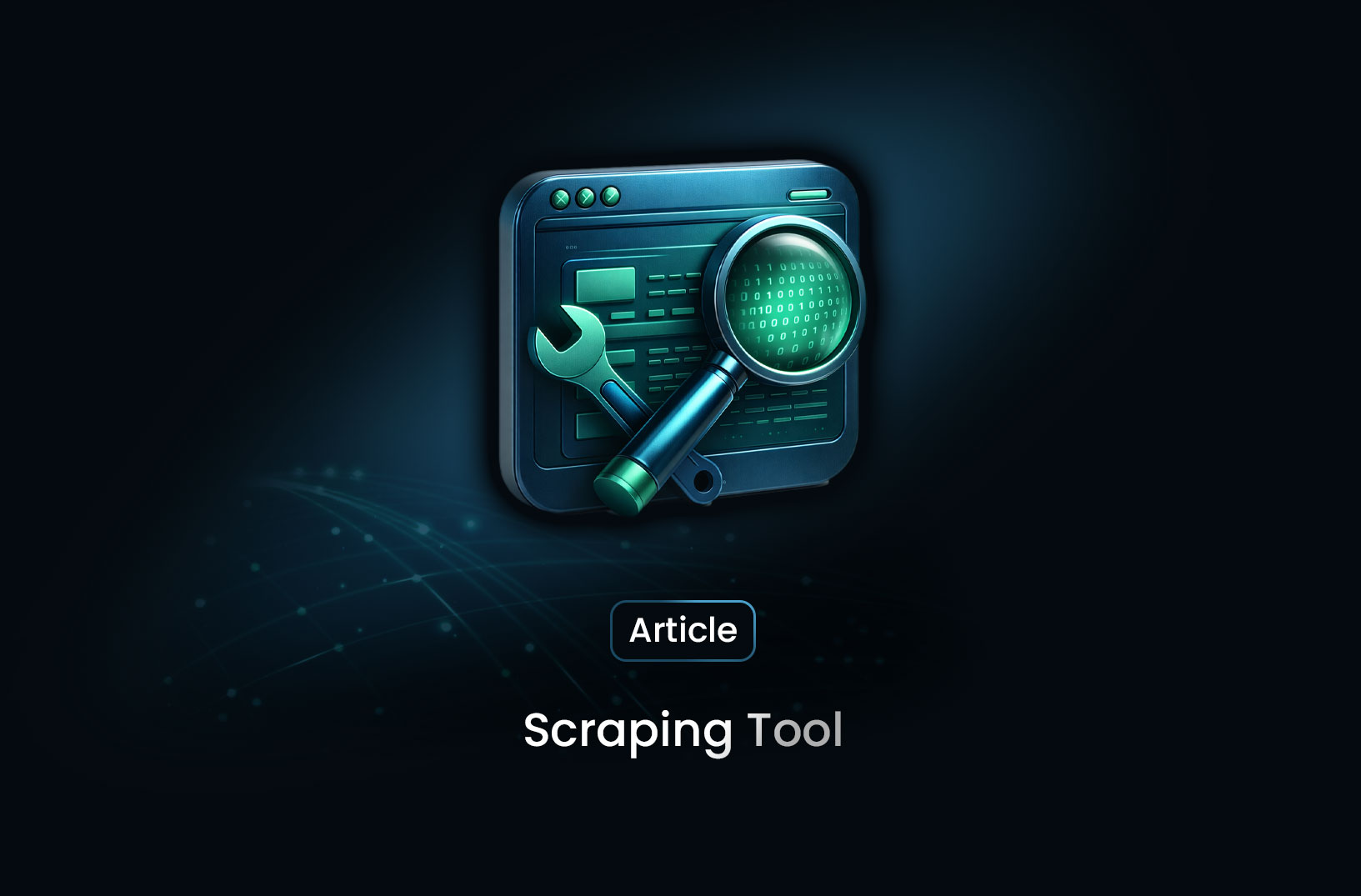
AI Web Scraping Tools: How Intelligent Scrapers Are Transforming Data Collection
ArticleDiscover how AI web scraping tools work, why they are replacing traditional scrapers, and how businesses use intelligent extraction to collect reliable web data.
As the modern web becomes increasingly dynamic, interactive, and visually complex, traditional scraping methods start to break. Webpages change structure frequently, content loads through JavaScript, and anti-bot systems are more aggressive than ever. Rule-based scrapers—no matter how carefully written—tend to break at the smallest layout update.
The result is a growing demand for AI web scraping tools: platforms that use artificial intelligence to interpret web pages, extract structured data, and adapt automatically to changes. Instead of relying on fragile selectors, AI scrapers behave more like humans—seeing the page, understanding context, and deciding what information is relevant.
For businesses that rely on data, this shift represents a major step forward.
Why the Industry Is Moving Toward AI Web Scraping
The fundamental problem with traditional web scraping is rigidity. A scraper written today may stop working tomorrow simply because a website:
- changed a class name
- moved a button
- rearranged a card
- modified the layout
Engineering teams often spend more time fixing scrapers than using the data.
AI web scraping tools flip this model. Instead of requiring manual rules, they interpret the page structure and content. This reduces setup time and dramatically increases scraper lifespan, even when websites update frequently.
Another driver is accessibility. Analysts, marketers, researchers, and small business owners often need data but lack coding experience. AI tools provide visual or automated workflows, allowing users to focus on insights—not infrastructure.
What Makes a Web Scraper “AI-Powered”?
AI web scraping isn’t a single technology. It’s a combination of several intelligent techniques that replace brittle rules with adaptive logic.
Key Components of AI Scrapers:
1. Visual Interpretation
Some tools treat the page like an image, identifying patterns such as:
- product cards
- tables
- listings
- grids
This mimics how a human visually recognizes data.
2. Heuristic & ML-Based Pattern Detection
AI clusters similar page elements into meaningful rows/columns—no CSS selectors needed.
3. Contextual Understanding
NLP models classify text semantically (e.g., detecting prices, names, ratings).
4. Adaptive Resilience
When a layout changes, AI re-evaluates the page instead of breaking instantly.
5. User Demonstration Learning
Some tools allow you to “show” the scraper what to do (clicks, highlights, scrolling), and it repeats the behavior across pages.
Combined, these capabilities make AI scrapers more reliable and accessible.
Examples of AI Web Scraping Tools in Today’s Market
Several platforms are leading the shift to intelligent scraping:
Browse AI
Train a robot by demonstration; it adapts even if page structure changes.
Apify AI Actors
Automatically extract data from common page types, using thousands of learned patterns.
Zyte Automatic Extraction
ML-driven extraction designed specifically for structured data like products or articles.
Octoparse
AI-assisted visual detection for no-code scraping.
ParseHub
Hybrid of AI and rule-based logic; handles JavaScript-heavy websites.
These tools illustrate how AI reduces complexity and improves extraction reliability.
How Businesses Use AI Web Scraping Tools Today
AI scrapers transform how different industries collect and use data.
Market Research
Track:
- competitor prices
- product details
- stock availability
- customer sentiment
Without maintaining brittle scrapers.
Lead Generation & Sales Intelligence
AI identifies contact information and company metadata from directories and social profiles.
E-Commerce Monitoring
Retailers gather:
- pricing
- inventory status
- rating changes
- promotions
across multiple competitors.
Data Providers & Agencies
AI reduces maintenance costs and ensures consistent output for client datasets.
Academic & Public Research
Gather datasets easily from government portals, publications, or university sites.
AI removes the traditional barrier of needing engineering skills.
Where AI Web Scraping Tools Still Face Challenges
AI scrapers aren't perfect. They struggle with:
- strict authentication
- advanced anti-bot systems
- CAPTCHA
- paywalls
These require traditional engineering tools like:
- headless browsers
- IP rotation
- fingerprint emulation
- session management
AI also makes “guesses,” which may frustrate technical users who want deterministic control.
For large-scale crawling (millions of pages), engineered pipelines are still more efficient.
AI Web Scraping in the Bigger Data Ecosystem
AI scrapers become the entry point for many teams:
- AI handles extraction
- Automation handles scheduling
- Proxies ensure reliability
- Pipelines process and clean the data
AI doesn’t replace scraping—it enhances it.
Why Companies Are Prioritizing AI Web Scraping Tools
Three major trends are pushing adoption:
- Websites are increasingly dynamic.
- Businesses need more data, faster.
- Non-technical teams want direct access to insights.
AI scrapers offer economic value by reducing maintenance costs and increasing stability.
The Future of Data Collection Is Intelligent
As ML models improve, expect:
- deeper semantic understanding
- automatic schema generation
- fully autonomous crawling
- scrapers that behave more like humans
Traditional scraping will continue to exist—especially for large-scale, custom pipelines. But AI tools make data accessible to everyone else.
In a world where data drives decisions, having tools that interpret the web instead of blindly parsing it is no longer optional. It’s becoming the new standard.
Find more insights here

Web Scraping in C++: A Detailed Guide for Developers
Learn how to build a web scraper in C++ using libcurl and libxml2. This guide covers HTTP requests,...

Scraping Tool: What It Is, How It Works, and How to Choose the Right One
Learn what a scraping tool is, how web scraping tools work, common use cases, and how to choose the...

How to Parse JSON with Python: A Practical Guide
A practical guide to parsing JSON in Python, covering json.loads, json.load, nested data, error hand...
